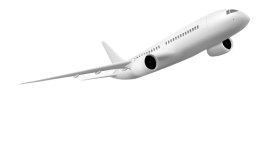Degrees of comparison are an important part of English grammar that help us compare the qualities of nouns. There are three types: positive, comparative, and superlative. The positive degree describes one thing (e.g., 'fast'), the comparative degree compares two things (e.g., 'faster'), and the superlative degree compares three or more things (e.g., 'fastest'). Learning how to use these degrees correctly makes your sentences clearer and more effective. This guide will explain the rules, show examples, and an important worksheet with answers to help you understand degrees of comparison easily.

Table of Contents
Degrees of comparison are variations in the form of adjectives and adverbs that are used to describe and compare the qualities. These degrees are used to express how one entity differs from another in terms of size, quality, quantity, or any other measurable attribute. Moreover, as per the Collins Dictionary, there are three types of degrees of comparison and they are,
Let us now look at each of the above-mentioned degrees of comparison in detail.
Meaning: The positive degree is the basic form of an adjective or adverb, used when no comparison is being made. It only describes a quality or characteristic of a person, thing, or concept.
Example: “Mike is tall.”
In this sentence, “tall” is the positive degree or attribute, describing Mike’s height without comparing it to anyone.
Use: The positive degree of comparison is used when you want to express a quality where a subject holds it without comparing it to others.
The comparative degree of comparison is used to compare the qualities of two entities. It depicts that one has more or less of a specific quality than the other.
Example: “Robert is taller than Mike.”
In this particular sentence, “taller” is the comparative degree of “tall”, portraying that Robert’s height is greater than Mike’s.
Use: The comparative degree is used when comparing two subjects or objects to show the difference in their qualities.
Example: “Robert is the tallest in the class.”
In this sentence, “Taller” is the superlative degree of “tall” portraying that Robert’s height is greater than everyone else’s.
Use: The superlative degree is used to show that one subject or object has the most or least quality as compared to the three or more entities.
Overall, these are the three degrees of comparison used in English grammar that students must be aware of. Further, in the next section, we will discuss the important rules for the degrees of comparison.
When using degrees of comparison in English grammar, some rules must be followed to ensure the proper usage of grammar. These rules help in forming the positive, comparative, and superlative degrees of adjectives and adverbs. Thus, have a look below at the degrees of comparison rules with the examples.
Rule 1: When there is one single entity, and no comparison being made a positive degree is used.
Positive degree example:
Rule 2: When two objects/persons are compared, a comparative degree is used by placing ‘er’ to the adjective word in linking with the word ‘than’ or in some cases ‘more’.
Comparative degree example:
Rule 3: When more than two things/persons are compared, the superlative degree is used by putting ‘est’ to the adjective word, or in some cases ‘most’ is used.
Superlative degree example:
Rule 4: Do not use double comparative adjectives or superlative adjectives.
Example: Incorrect- These apples are more tasty than those
Correct- These apples are tasty than those
Rule 5: Never use ‘more or most’ with the adjectives that give no sense.
Degree of Comparison Example:
Incorrect- This route is more parallel to that one.
Correct- This route is parallel and the other is not.
Rule 6: There are a few adjectives that go with the ‘to’, like senior, junior, superior, inferior, preferable, prefer, and elder. Do not use ‘than’ with these adjectives.
Degree of adjective models:
Incorrect: I am senior than her
Correct: I am senior to her
Incorrect: This perfume brand is superior than that.
Correct: This perfume brand is superior to that.
Rule 7: When comparing the two things, there should be similarity i.e. similar things should be compared.
Example:
Incorrect- This wall colour is more beautiful than the old one. (wall colour is compared with the wall)
Correct- This wall colour is more beautiful than that of the previous one. (compare wall colour with wall colour)
Rule 8: When the comparative degree is used in the superlative degree sense,
1 Use ‘any other’ when thing/person of the same group is compared.
Degree of Comparison Example:
Incorrect: Krishna is prettier than any student of her class
Correct- Krishna is prettier than any other student of her class.
2 Use ‘any’ if the comparison of the thing/person is made outside of the group.
Incorrect- Mumbai is cleaner than any other city in India.
Correct- Mumbai is cleaner than any city in India.
Overall, these are the degrees of comparison rules used in English grammar. Further, in the next section, we will discuss examples of how you can use these degrees in the sentences.
The following section will let you know about the words and their use in the degrees of comparison for a proper understanding. Thus, look below at the degrees of comparison examples with answers in sentences for your preference.
| Positive Degree of Comparison | Comparative Degree of Comparison | Superlative Degrees of Comparison |
|---|---|---|
| Rashi is clever | Rashi is more clever than Siddhi | Rashi is the clever of all the girls |
| The pancake is delicious | This pancake is more delicious than the other one we had yesterday | This pancake is the most delicious I have ever tasted |
| Vinita has a big house | Vinita has a bigger house than Sunita | Vinita has the biggest house |
| The book is interesting. | This book is more interesting than the other books I have read. | This book is the most interesting book I have read. |
| The sun is hot | The sun is hotter than the moon | The sun is the hottest star in the sky |
| The car is fast | The blue car is faster than the red car | The blue car is fastest of all the cars. |
| This painting is beautiful | This painting is more beautiful than the other one | This painting is the most beautiful of all the paintings. |
| The dresses in this boutique are expensive | The dresses in this boutique are more expensive than the boutiques in the city. | The dresses in this bouquet are the most expensive. |
| My brother is smart | My brother is more smart than my sister | My brother is the smartest among all the members |
| Studying abroad is a good way to gain global exposure. | Studying abroad is better than staying in your home country for higher education. | For many students, studying abroad is the best decision for their future career. |
Overall, these are the degrees of comparison examples with answers for students to gain proper knowledge of it. In the next section, you will find the list of the degrees of comparison.
Before I move forward to our last section, you need to keep in mind that the rule to add ‘-er’ and ‘-est’ to form the comparative and superlative degrees of comparison does not remain the same with every adjective. Thus, in this section, we have mentioned the degrees of comparison list with examples.
| Positive | Comparative | Superlative |
|---|---|---|
| Big | Bigger | Biggest |
| Hot | Hotter | Hottest |
| Positive | Comparative | Superlative |
|---|---|---|
| Bright | Brighter | Brightest |
| Cool | Cooler | Coolest |
| Positive | Comparative | Superlative |
|---|---|---|
| Large | Larger | Largest |
| Simple | Simpler | Simplest |
| Positive | Comparative | Superlative |
|---|---|---|
| Dry | Drier | Driest |
| Wealthy | Wealthier | Wealthiest |
| Positive | Comparative | Superlative |
|---|---|---|
| Sensible | More sensible | Most sensible |
| Faithful | More faithful | Most faithful |
| Positive | Comparative | Superlative |
|---|---|---|
| Bad | Worse | Worst |
| Little | Less | Least |
Overall, this is the list of types of comparison degrees in English that students must know. In our last section, we have provided the degrees of comparison worksheet with answers.
Uncover More About Study Abroad UK
Learn Everything about studying in UK
To solve the degrees of comparison worksheet you must be well aware of synonyms and have a good vocabulary skills. However, in this section, we have mentioned the degrees of comparison worksheet with answers for a better understanding.
Questions
Answers
These are the degrees of comparison examples with answers for your preference.
To conclude, we discussed the degrees of comparison and learned how they worked in English grammar. Further, we also had a look at the types, rules, examples, and list of degrees in English. Now, having an understanding of this topic is vital for students who are struggling with the English language. Thus, if you are looking for more such content like daily use English words, tongue twisters, and new English words, then visit our website and read about it.
The Collins Dictionary defines the 'degrees of comparison' as “the listing of the positive, comparative, and superlative forms of an adjective or adverb.” In other terms, it can be said that one can use the degree of comparison to make a comparison between nouns having similar qualities or qualities.
There are three degrees of comparison: Positive Degree. Comparative Degree. Superlative Degree.
Examples of degrees of comparison include:
Positive: Tall, bright, beautiful.
Comparative: Taller, brighter, more beautiful.
Superlative: Tallest, brightest, most beautiful.
Yes, there are exceptions, especially with irregular adjectives and adverbs. For instance, “good” changes to “better” in the comparative form and “best” in the superlative form. Similarly, “bad” changes to “worse” and “worst”.
The degree of adjective or degrees of comparison which compares one thing/person to another. Three types of it are Positive, Comparative, and Superlative.
We are available in :
BangaloreAhmedabadJaipurHyderabadKeralaPuneChandigarhMumbaiGurgaonChennaiKolkataTrivandrumNoidaKochiCalicutKottayamKollamThrissurIndoreUdaipurdisclaimer:logos and other registered trademarks of universities used on this platform are held by their respective owners. Gradding does not claim ownership or association on them, and their use is purely for informational and illustrative purposes.






